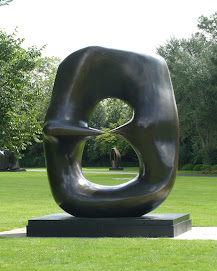
Posted 04.27.2009
In the computer science lab where they work at MIT, Erik and Martin Demaine have a three-foot-tall metal and plastic sculpture that resembles a sleek, modernist version of a child's Tinkertoy creation.
Erik, a math prodigy who was honored in Popular Science's second annual Brilliant 10, and his father Martin, an artist who was drawn into math through his son, built the piece by starting with a three-dimensional hexagon they folded from paper. They then inputted the shape into a computer and virtually erased all of the paper, so that only the creases remained. Next, they turned back to the tangible and created a dynamic piece of 
"We took something real and virtualized it, and then made it real again," explains Martin, 66, an MIT instructor and artist in residence.
They also took art, turned it into math and then back into art again. This belief that math and art are complementary endeavors is the key to the Demaines' work. The men use complex mathematics to create beautiful art, some of which is on display at the Museum of Modern Art in New York City. And they construct sculptures to help solve seemingly intractable math problems. Along the way, the lively and often goofy duo have inspired students to think more creatively about their discipline, and have shown the public that math doesn't have to feel inaccessible.
"We view them as very similar things," says Erik, a 28-year-old assistant professor, referring to math and art. "They're both creative processes. They're both about having the right idea."
Source:
http://www.popsci.com/scitech/article/2009-04/math-art-and-origami-mit






![Objet Mathematique [Mathematical object], 1934-36](https://blogger.googleusercontent.com/img/b/R29vZ2xl/AVvXsEjLj3RbKwEsBQ9_oXAT8tJF4nqp-uvyD5k1gCCLHBM_b-FZsKFEu5Noon_p_mT_vcKWjWmTGpiLj-nxAv1VZpI_ITC5X-Q51T9wXr-Uzpb3xBtMpY_E_FqpW0ard-_7d4BrcTkb-2ASQUM/s264/00objet_math.gif)
